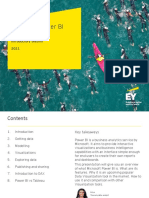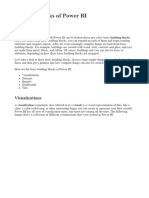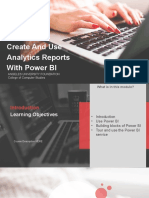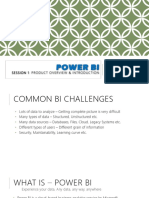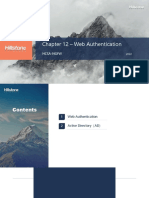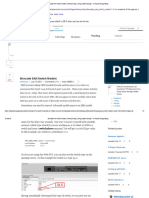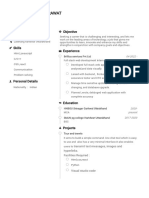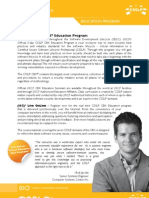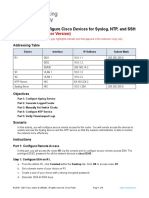0% found this document useful (0 votes)
34 views2 pagesPower BI Guide
The Power BI Starter Guide provides an overview of the Power BI interface, including key components such as the navigation bar, Q&A question box, and dashboard features. It outlines the workflow from data import in Power BI Desktop to creating and sharing dashboards in the Power BI service. Additionally, it covers essential tips for visualizations, data management, and utilizing Power BI Mobile for accessing reports and dashboards on-the-go.
Uploaded by
busurca ilincaCopyright
© © All Rights Reserved
We take content rights seriously. If you suspect this is your content, claim it here.
Available Formats
Download as PDF, TXT or read online on Scribd
0% found this document useful (0 votes)
34 views2 pagesPower BI Guide
The Power BI Starter Guide provides an overview of the Power BI interface, including key components such as the navigation bar, Q&A question box, and dashboard features. It outlines the workflow from data import in Power BI Desktop to creating and sharing dashboards in the Power BI service. Additionally, it covers essential tips for visualizations, data management, and utilizing Power BI Mobile for accessing reports and dashboards on-the-go.
Uploaded by
busurca ilincaCopyright
© © All Rights Reserved
We take content rights seriously. If you suspect this is your content, claim it here.
Available Formats
Download as PDF, TXT or read online on Scribd
/ 2


